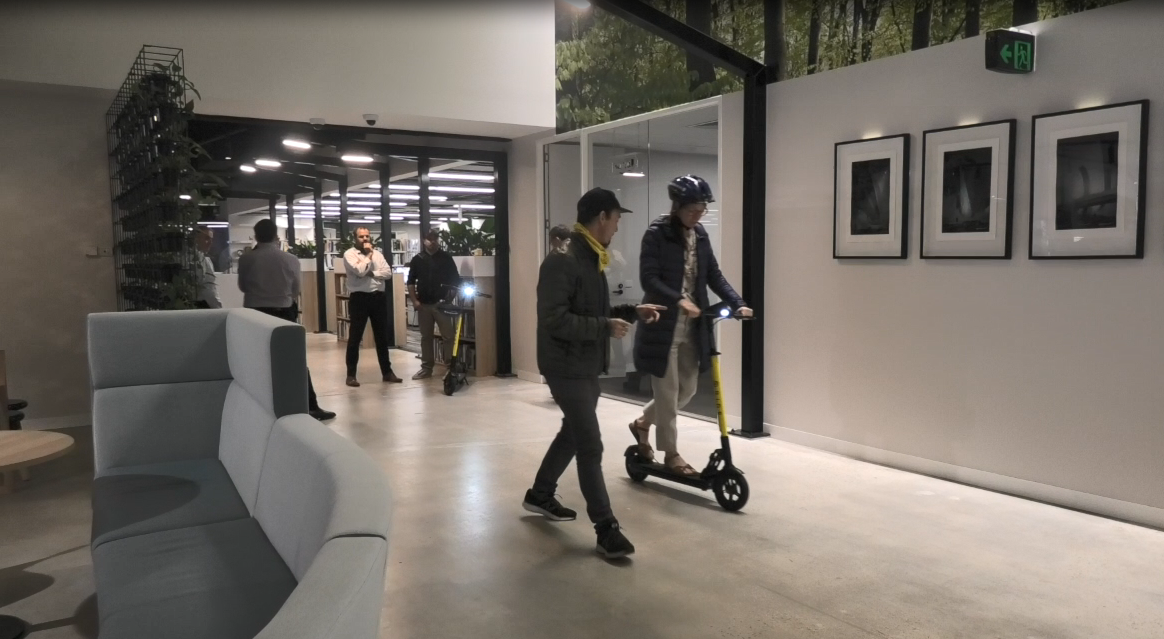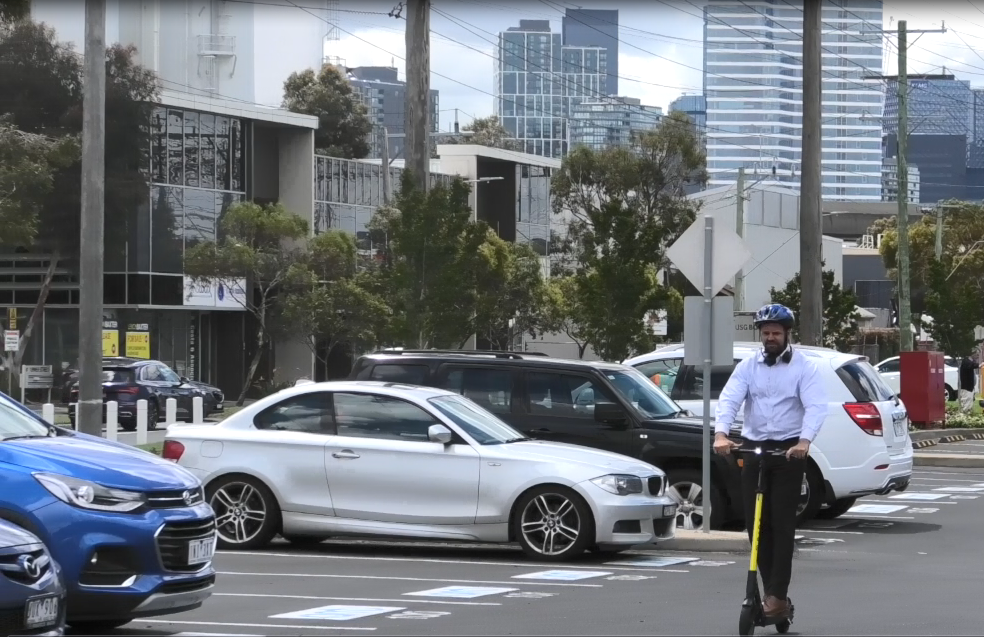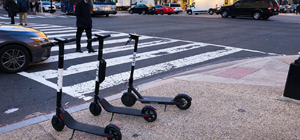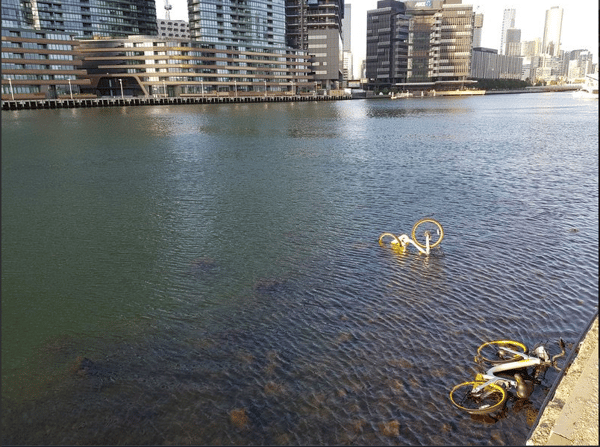E-scooters. Are they the last mile answer? Or an accident waiting to happen?
What is beyond doubt is that scooters are here, and they’re hot. Running on battery power, e-scooters – both personally owned and increasingly rented via scooter-share companies - are appearing in growing numbers on Australia’s east coast.
In the US and New Zealand, they’re already up and running. People like the e-scooter concept. The e-scooter’s portability, ease of use and ability to get to where you’re going quickly are driving the phenomenon. With several companies now jockeying for position to offer scooter sharing schemes via apps, e-scooters look certain to become a viable and popular mode of transport in our cities.
But as with most transport disruptors (think Uber and oBike), introduction and use are miles ahead of any form of consistent regulation by authorities. So any potential downside – like a kneecapped taxi industry or discarded bikes in trees – loom as a fix-on-the-run job for regulators.
That’s not the only thing that may need fixing. You may too. E-scooters which can hit top speeds of 25km/h and are available for hire by anyone who can use a mobile phone creates risk. Our Kiwi mates are falling off e-scooters in growing numbers, smashing teeth and cracking heads. The injury rate is even higher in the US, it appears. The first share scooter fatality has already been recorded.
As for the scooters themselves, one company has admitted issues with batteries catching fire – albeit a small number of scooters. Rider abuse has been blamed for some scooters snapping to bits mid-ride. And then, there’s this guy who neatly combines all the downsides in a video gone viral.
No doubt you are now screaming aloud: ‘This is why we can’t have nice things’! But there’s plenty of upside as well as downside to e-scooters.
ARRB has recently had the National Transport Commission (NTC) conduct an Innovative Vehicles Workshop at ARRB’s National Transport Research Centre. The aim of the workshop was industry and government collaboration to develop a legislative framework for future mobility solutions to share Australian pathways safely. The innovative mobility solutions include Segways, mobility scooters, motorised skateboards and E-Scooters.
Following the workshop we had scooter-sharing company RIDE – based in Melbourne – visit for a chat about how we may be able to work with them in the future. We also got to test-ride some of their scooters.
So let’s take a good look at both sides of the argument.
Pros:
Very easy to learn to use
Our staff without exception were up and about within 90 seconds of being shown how to operate a scooter by the good folks at RIDE. All our staff wore a supplied helmet, and we tested them in a variety of conditions. We had no falls and a lot of fun!

Perfect last mile option
The first and last mile benefits of the e-scooter will drive their popularity. Getting from the train station or bus stop to work, then back again, are perfect e-scooter trips.

No sweat
Unlike a bike or a walk which depending on conditions and distance may require some level of strenuous activity, you can get to that business meeting sweat-free and ready for action while wearing your office attire. Plus, it’s a pretty good ice-breaker for that meeting when you tell people how you got there, and what it was like zipping around on the hottest new transport toy in town!
Portability
Small and light enough to carry in one hand. If you are renting, drop it off where you feel if you are hiring from a dockless station. If you own it, put it under your desk, in a locker or cupboard. That’s easier then finding somewhere to lock up a bike, or storing a bike in an office without conveniently located racks.
Cheap to hire
Most companies seem to be pitching around the $1 or $2 mark to initially hire the scooter, plus a minimal charge per minute used, or kilometre travelled. Whichever way becomes the accepted practice for rental, you won’t need a second mortgage or a high-interest finance package to get mobile via scooter.
Coolness factor
Yes, they look cool. And that matters. People watch you when you ride it, and nod in approval.
Environment
E-scooters are better for the world around you than taking a short trip in a combustion engine powered vehicle. How many vehicles could they potentially take off the road, especially in already congested cities?

Cons:
Regulation - where should they be used?
Do they work on bike lanes, footpaths, roads? All of them? Some of them? Or none of them? Where should be no-go zones for scooters? Are they really suitable for busy roads, heavily pedestrianised thoroughfares, or inside shopping malls? All of which they are being used in now as the speed of their introduction outstrips regulation. These are key arguments those in charge of our cities need to get their heads around.
Potential for injuries
In New Zealand, their national newspaper reports a spate of Kiwi scooter users bound for the emergency room after falling off. You can actually die on one of these things. It’s been done. And then there’s this guy again...
But the potential for injury is not only for those using the scooters. What about pedestrians? Having to dodge scooters coming and going at 25km/h is another hazard in a busy city, and this could leave a pedestrian injured in a traffic accident you literally didn’t see coming. The interaction between pedestrians and e-scooter users is a critical one to get right.
Does dockless mean lawless?
Can dockless share-scooter schemes work in Australia? The oBike disaster in Melbourne, in which oBikes found themselves up trees, clogging up inner-city footpaths and parks, and floating en masse in the Yarra River, suggests docklessness and lawlessness go hand in hand. We, the people, may actually be the problem.

Helmets
Sensible regulation will ensure that e-scooter riders will need to wear helmets. Which means you’ll need a helmet with you, or one available to hire, to ride a scooter. That cuts into the ease of use, portability and dockless nature of the scooter-share schemes.
Alcohol
Drinking and driving doesn’t mix. We know that. So there will be some who see drinking and scooting as an option to avoid drinking and driving. They shouldn’t. Some scooter companies overseas are locking down scooters at nighttime (usually 8pm to 6am or similar) to avoid any issues like this. But short of putting an alcohol interlock device on scooters, this may need to be a regulation/education piece.
